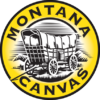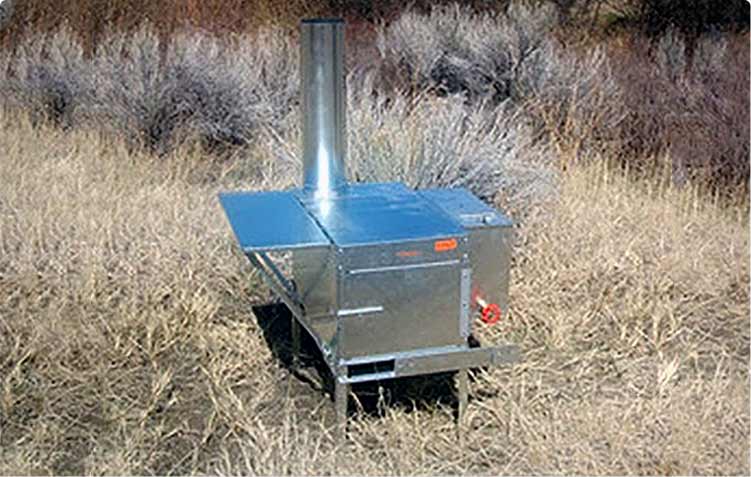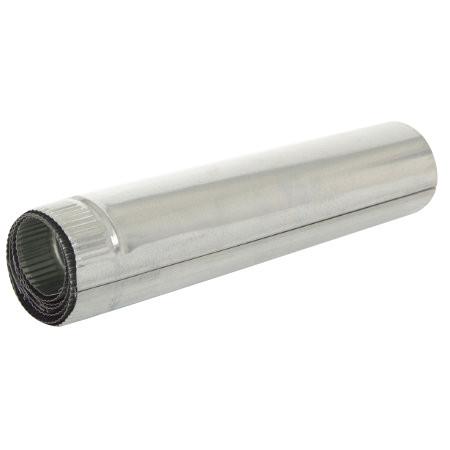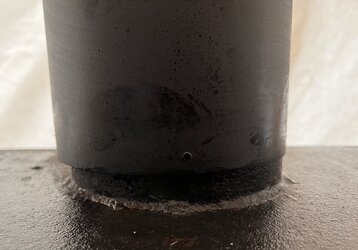Double checking-attaching stove pipe directly to stove
- Thread starter idahogal
- Start date
-
Active since 1995, Hearth.com is THE place on the internet for free information and advice about wood stoves, pellet stoves and other energy saving equipment.
We strive to provide opinions, articles, discussions and history related to Hearth Products and in a more general sense, energy issues.
We promote the EFFICIENT, RESPONSIBLE, CLEAN and SAFE use of all fuels, whether renewable or fossil.
You are using an out of date browser. It may not display this or other websites correctly.
You should upgrade or use an alternative browser.
You should upgrade or use an alternative browser.
This depends on the stove and the brand of double-wall stovepipe. If possible, test it out at the store. With a good fit, no cement or gasket is needed. If that's not possible, then measure the flue collar and compare to the stovepipe's inner and outer diameters.
It’s already bought and on the flue collar. It looks like it fits fine but I have no idea what I’m doing so wanted to verifyThis depends on the stove and the brand of double-wall stovepipe. If possible, test it out at the store. With a good fit, no cement or gasket is needed. If that's not possible, then measure the flue collar and compare to the stovepipe's inner and outer diameters.
An old Woodland and Selkirk double wall black not stainlessIt may be ok. What stove and what stovepipe?
That's right, I recall now, this is for the tent. Does it transition to chimney pipe before exiting?
That's right, I recall now, this is for the tent. Does it transition to chimney pipe before exiting?
It may be ok. Pictures of the flue collar and chimney solution are welcome.
That is quite dangerous. Double-wall stove pipe is still quite radiant and it is not designed or allowed for outdoor usage. It has no insulation, only an air gap between layers. This should have been done with chimney pipe which has real insulation and a much safter 2" clearance.Correct!
Nope, double wall all the way up and out
Oh no…that’s what I was asking the other dayThat is quite dangerous. Double-wall stove pipe is still quite radiant and it is not designed or allowed for outdoor usage. It has no insulation, only an air gap between layers. This should have been done with chimney pipe which has real insulation and a much safter 2" clearance.
So normally, hot tents just use single wall pipe. I thought I was ok with double wall
The example in30WCF's posting shows 5" chimney pipe. Unfortunately he referred to it as double-wall which probably was confusing. #9 His tent has double-wall chimney pipe, not stove pipe.
I also mentioned using chimney pipe here #20 and here #33 but I should have clarified the prior usage in the thread.
This confusion is getting so common I think I need to make a special posting just on this topic.
I also mentioned using chimney pipe here #20 and here #33 but I should have clarified the prior usage in the thread.
This confusion is getting so common I think I need to make a special posting just on this topic.
The stovetop looks wet. Is there a cap on the stove pipe?
30WCF
Minister of Fire
30WCF
Minister of Fire
Just for reference.
This is our tent.

 montanacanvas.com
montanacanvas.com
They sell these stoves

 montanacanvas.com
montanacanvas.com
I use the pipe they sell. While we arnt packing in on horses, that’s the idea here. All the pipe in a tidy bundle so it fits on a horse or mule.

 montanacanvas.com
montanacanvas.com
This is our tent.

Wall Tents | Wall Tents Montana - Montana Canvas Wall Tents
Wall tents - Our wall tents are handmande in the USA. Premium Montana blend canvas. Available in a variety of sizes with custom build-your-own options.
 montanacanvas.com
montanacanvas.com
They sell these stoves

Stoves
The stoves we carry can handle all the rough treatment and rugged conditions of packing in. Whether you reach camp by pickup or pack horse you can depend on our quality line of stoves to do the job right when you get there. Prices subject to change without notice. Weights are approximate.
 montanacanvas.com
montanacanvas.com
I use the pipe they sell. While we arnt packing in on horses, that’s the idea here. All the pipe in a tidy bundle so it fits on a horse or mule.

Nesting Stove Pipe - Montana Canvas
Comes with five 24" pieces of pipe. 5" pipe starts at 5" at the base of the stove and gets to a larger 6" at the peak.
 montanacanvas.com
montanacanvas.com
Last edited:
30WCF
Minister of Fire
I did say double wall pipe would be better than single wall. It just has to be. I can always touch my double wall in my house with out getting blisters.
But again. I just need it for a week or two out of the year. Single wall is standard practice in all the camps I’ve been in or around. Some outfitter guides do set up for the whole winter and run 24/7 for elk and mule deer and bear and whatever else.
But again. I just need it for a week or two out of the year. Single wall is standard practice in all the camps I’ve been in or around. Some outfitter guides do set up for the whole winter and run 24/7 for elk and mule deer and bear and whatever else.
30WCF
Minister of Fire
Sorry if I was confusing. I think I referenced each term correctly and as I intended and even mentioned that Class A is not commonplace in that circle.I like the idea of the double wall pipe if you are customizing the jack in the tent roof. It will help with creosote build up which can be a problem in tents since they usually in single wall pipe rather than class A on the exterior.
Single wall pipe outside the tent when it’s 8 degrees F can collect some crud.
You likely won’t find a cap made to fit double wall stove pipe, but could rig one with an adapter.
The double wall 6” won’t fit your 6” jack since double wall will be closer to 7” or 7.25” outside diameter. But if you can customize it or get a special ordered jack flap…maybe.
Our tent has a 5” jack and single wall nesting pipe is snug.
View attachment 319601View attachment 319602
30WCF
Minister of Fire
Let me clarify that I’m not disagreeing or arguing with bgreen. His points are valid. I’m just speaking to my experiences and what commonly takes place on many folks hunting trips, what gear is sold and supplied in those circles.
We can look back and see I also referenced that me hunting is different than the tent houses and yurts with real chimneys, and I said something about dudes just doing stuff to get it done, and bourbon.
We can look back and see I also referenced that me hunting is different than the tent houses and yurts with real chimneys, and I said something about dudes just doing stuff to get it done, and bourbon.
30WCF
Minister of Fire
What’s the collar look like without the pipe in it. I had to trim a little of the crimped section so it would go all the way down. There are tabs inside my flue collar that stop me from hitting the wool blanket and baffle. Trimming also got me to the wider/upper section of the crimped area so it would self center and fit tighter on the inside the stove collar.
It was just leaking through the stove jack flap. The pipe hadn’t been installed yetThe stovetop looks wet. Is there a cap on the stove pipe?
Last edited:
I’m just going to refer to all your comments on this as it’s a pain to quote all on my phone.What’s the collar look like without the pipe in it. I had to trim a little of the crimped section so it would go all the way down. There are tabs inside my flue collar that stop me from hitting the wool blanket and baffle. Trimming also got me to the wider/upper section of the crimped area so it would self center and fit tighter on the inside the stove collar.
The stove pipe snugly went down on the stove collar. Outfitters run for months at a time with single wall pipes through their stove jack flaps. I can’t imagine that double wall wouldn’t be even marginally better.
I guess at this point it is what it is. It’s installed., I lit it. It’s got great draw, I did not notice any smoke in the tent.
I understand that, though it's a bit different when talking about a 24/7 fire in one's 365 living quarters. When lives are involved I will err on the side of caution and safety.Me and every other hillbilly chasing elk are using single wall pipe.
30WCF
Minister of Fire
I can always stand to be corrected.I understand that, though it's a bit different when talking about a 24/7 fire in one's 365 living quarters. When lives are involved I will err on the side of caution and safety.
Me too, I didn't know about the nesting pipe sold by Montana Canvas.I can always stand to be corrected.
Similar threads
- Replies
- 20
- Views
- 1K
- Replies
- 2
- Views
- 432
- Replies
- 4
- Views
- 528
- Replies
- 13
- Views
- 850


